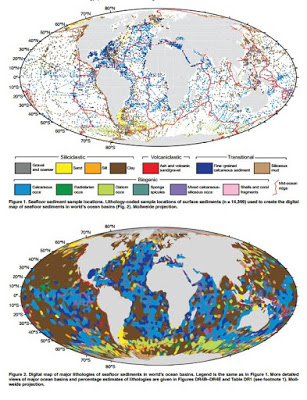
Ocean sediments cover 70% of our planet’s surface, forming the substrate for the largest ecosystem on Earth and its largest carbon reservoir — but the most recent map of seafloor geology was drawn by hand more than 40 years ago. Now Adriana Dutkiewicz and her colleagues from the University of Sydney have carefully analyzed and categorized 15,000 seafloor sediment samples to reveal that deep ocean basins are much more complex than previously thought.
The team has created a new digital seafloor geologic map using an artificial intelligence method designed to learn how different types of deep marine sediments are juxtaposed. Combined with sea surface observations, the map reveals that diatom accumulations on the seafloor are nearly entirely decoupled from diatom blooms in surface waters in the Southern Ocean.
Diatoms are tiny planktonic organisms thriving in sunlit surface waters, producing about a quarter of the oxygen we breathe, and making a major contribution to fighting global warming as their dead remains sink to the bottom of the ocean, locking away their carbon. However, the new seafloor geology map demonstrates that geoscientists don’t yet understand how carbon sources in surface ocean waters are linked to sinks on the seafloor.
Reference:
Census of seafloor sediments in the world’s ocean
Adriana Dutkiewicz et al., EarthByte Group, School of Geosciences, University of Sydney, Sydney, Australia. Published online ahead of print on 5 Aug. 2015; DOI: 10.1130/G36883.1. This article is OPEN ACCESS.
Note: The above post is reprinted from materials provided by Geological Society of America.










